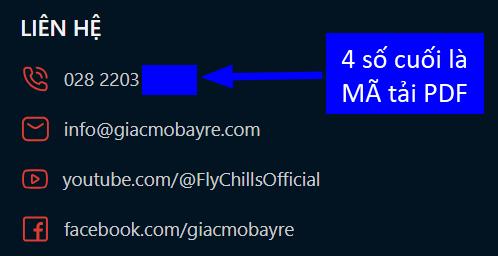


INTRODUCTION
If you have mastered the basic structures in English, whether it is because you studied the language in school, practiced it while traveling, or studied it through other Living Language courses, then Business English is an ideal course for you.
The complete course includes this textbook and four hours of recordings. If you already know English pronunciation, you may use the book by itself.
Business English teaches readers to speak, understand, read, and write idiomatic English. The program also introduces cultural aspects and business etiquette in the United States. You will be able to participate in interesting conversations about a wide variety of topics; you will also be able to respond to formal and informal speaking styles.
The course will transport you to different places, from Ellis Island to a virtual office, so you become acquainted with different expressions and the English vocabulary that is required of most businesspeople. You will read newspaper articles and analyze financial reports. You will also learn more about the subtle cultural differences in interpersonal relations, such as when you should insist on paying for a meal and when you should let others pay. These tips will help you when you are traveling to or doing business in an English-speaking country.
COURSE MATERIALS
MANUAL
The Business English manual consists of twenty lessons, four reading passages, and two review quizzes. The reading passages appear after every five chapters. There are two review quizzes: one after Lesson 10 and the other after Lesson 20.
We suggest that you read and study each lesson before listening to the recordings.
DIALOGUE: Each lesson begins with a dialogue that contains standard, idiomatic language depicting real-life situations—a job interview, an apartment search, registering for a university course in the United States.
NOTES: The notes refer to expressions and phrases specific to the dialogue. They offer cultural or historical background and show grammar and vocabulary “in action.”
GRAMMAR AND USAGE: After a brief review of basic English grammar, the course focuses on more advanced structures and their usage. You will learn to express yourself using idiomatic phrases in English.
IDIOMATIC STUDY: This section presents idiomatic expressions in English. You will learn how to express disagreement and make complaints like a native speaker. This vocabulary study will also help you avoid common mistakes made by learners of English as a second language.
STRICTLY BUSINESS: This section reviews different areas of the U.S. economy as well as historical and cultural information related to business etiquette. Topics include imports and exports, business attire, and advertising.
EXERCISES: This section reviews the grammar and vocabulary introduced in the lesson. Answers appear after Lesson 20.
READING: Four readings appear after Lessons 5, 10, 15, and 20. You will infer meaning using background information from earlier lessons.
REVIEW: Two review sections appear after Lessons 10 and 20. They integrate and evaluate the material presented in previous lessons.
APPENDIXES: Four appendixes are included: a pronunciation table, a grammar review, a list of irregular verbs, and a section on correspondence.
VOCABULARY LIST: A reference list of the vocabulary taught in the book.
INDUSTRY-SPECIFIC TERMS: Additional vocabulary used in various business industries.
INDEX: Contains all grammatical points discussed in the lessons.
The appendixes, vocabulary lists, and index make this manual an excellent source for reference and future study.
RECORDINGS
This course includes four hours of recorded practice material. Listening and imitating native speakers will improve your pronunciation and comprehension as you learn new phrases and grammatical structures.
The recordings follow the dialogues in the twenty lessons. The recorded material is printed in bold type in the manual. First, listen to the dialogue at normal speed; then you will hear it again with pauses for repetition.
To practice comprehension, listen without reading, write a summary, and then re-listen while reading the script.
LESSON 1
Arriving in the United States
A. DIALOGUE
WHERE’S MY LUGGAGE?
Gloria is a sales representative for a leather company in Argentina. This is her first trip to the United States. She’s arriving in New York where she will have to clear customs and take a connecting flight to Missouri, her final destination. She’s sitting next to Herman, a businessman from San Francisco whom she has never met before.
CAPTAIN: Ladies and gentlemen, this is the captain speaking. We will be landing in approximately 15 minutes. The current temperature at JFK is 45 degrees under cloudy skies. Flight attendants will be handing out customs declaration forms and I-94 forms. Please complete them before landing.
GLORIA: Excuse me, do you have a pen I could borrow?
HERMAN: Here you are.
GLORIA: Thanks. Oh, it’s so bumpy. It’s difficult to write. I’m sorry to bother you again, but do you happen to know the flight number?
HERMAN: Umm, it’s Flight 351.
GLORIA: Thanks. By the way, I’m Gloria.
HERMAN: I’m Herman. Nice to meet you. Is this your first trip to the States?
GLORIA: As a matter of fact, it is. I’m very excited about it. Are you from New York?
HERMAN: No, I’m from San Francisco. I have to catch another flight in about an hour, and we still have to go through customs.
GLORIA: I understand it’s a nightmare.
HERMAN: Actually, it’s not that bad.
FLIGHT ATTENDANT: Ladies and gentlemen, please make sure all your forms are filled out and ready along with your passport when you leave the plane. We hope you’ve enjoyed your trip. Thank you for flying United.
GLORIA: Thanks for the pen, and have a good trip to San Francisco.
HERMAN: You, too. Enjoy your stay.
Later at the Baggage Claim area.
GLORIA: Excuse me, where did you get that cart?
ANOTHER PASSENGER: Sorry, lady, I’m afraid I can’t help you. I’ve got to get my bags. Why don’t you ask the skycap over there?
GLORIA: Excuse me, I need to get one of those carts.
SKYCAP: They’re on the other side of the hall under the sign that says “Baggage Carts.”
GLORIA: Thanks. Do they cost anything?
SKYCAP: A dollar fifty.
GLORIA: Oh, no. I don’t have any change. Do you have change for a twenty?
SKYCAP: I’m afraid not. There’s a currency exchange counter over there on the right, ma’am. I’m sure they’ll be able to help you.
GLORIA: Thank you. You’ve been very helpful.
Gloria gets some change, picks up a cart, and waits near the baggage carousel for a long time without seeing her suitcases.
HERMAN: Hi there! You look a little worried. Anything I can help you with?
GLORIA: Well, I’ve been standing here forever, and my suitcases are nowhere to be found. They’re filled with leather bags and shoes for the trade show in St. Louis tomorrow. I just can’t afford to lose them. Look, almost everyone else already has their stuff!
HERMAN: The problem is you’re standing at the wrong carousel. This one is for Flight 361; ours was 351.
GLORIA: I’m so embarrassed! I should have worn my glasses. Thank you so much.
HERMAN: No problem. Come on, I’ll help you get your baggage.
B. NOTES
- Missouri is located in the Great Plains, west of the Mississippi River. St. Louis, founded in 1784 by French explorers, is known as the “Gateway to the West.”
- San Francisco, in California, is famous for its architecture, hills, steep streets, and the Golden Gate Bridge.
- “JFK” is the common abbreviation for John F. Kennedy International Airport.
- Temperature in the U.S. is measured in Fahrenheit.
- Form I-94 is an immigration record of entries and departures.
- To borrow means to receive something on loan (not to be confused with to lend).
- To be excited expresses strong, happy anticipation.
- Actually means “in fact,” not “currently.”
- A skycap is a person who assists travelers with luggage at an airport.
- Change refers to money of smaller denominations.
- Embarrassed means feeling self-conscious, ashamed, or uneasy.
C. GRAMMAR AND USAGE
1. The Elements of a Sentence
English sentences have a subject and a predicate, and word order is strict.
- Subject + Verb
Birds fly. - Subject + Verb + Object
The passenger called the flight attendant.
You may add complements, but the order must remain subject + verb + object.
2. Personal Pronouns
Pronouns replace nouns. English distinguishes between subject pronouns and object pronouns.
a. Subject Pronouns
| Number | Person | Pronoun |
|---|---|---|
| Singular | 1st | I |
| Singular | 2nd | you |
| Singular | 3rd | he / she / it |
| Plural | 1st | we |
| Plural | 2nd | you |
| Plural | 3rd | they |
English requires subjects; they cannot be omitted.
The impersonal it is used for weather, time, distance, and sentences with infinitive or clause subjects.
b. Object Pronouns
| Number | Person | Pronoun |
|---|---|---|
| Singular | 1st | me |
| Singular | 2nd | you |
| Singular | 3rd | him / her / it |
| Plural | 1st | us |
| Plural | 2nd | you |
| Plural | 3rd | them |
Direct and indirect objects may appear before or after the verb.
When the indirect object follows the direct object, it requires to or for.
Examples:
- She gave him my passport.
- She gave my passport to him.
- She bought Mary a round-trip ticket.
- She bought a round-trip ticket for her.



